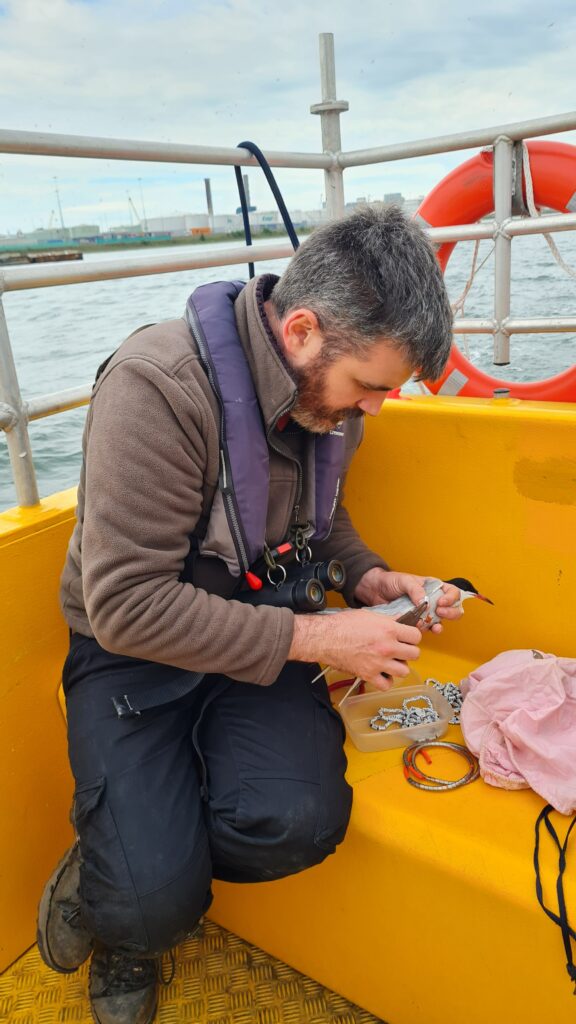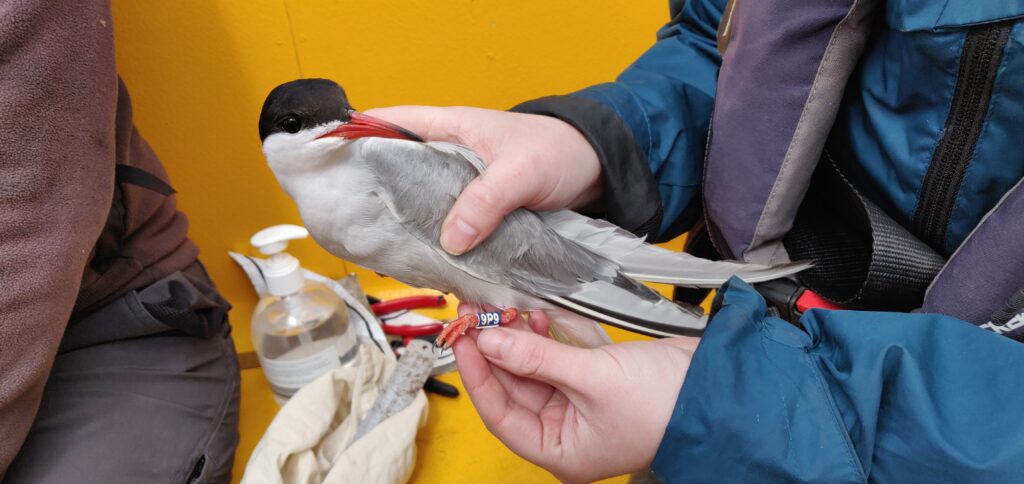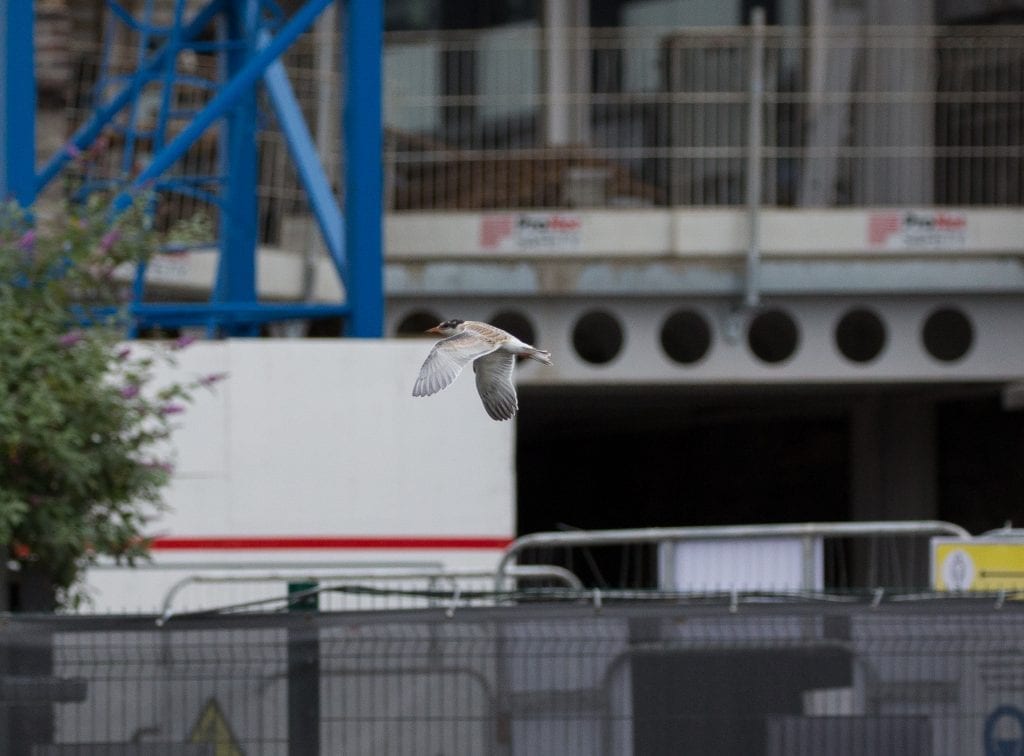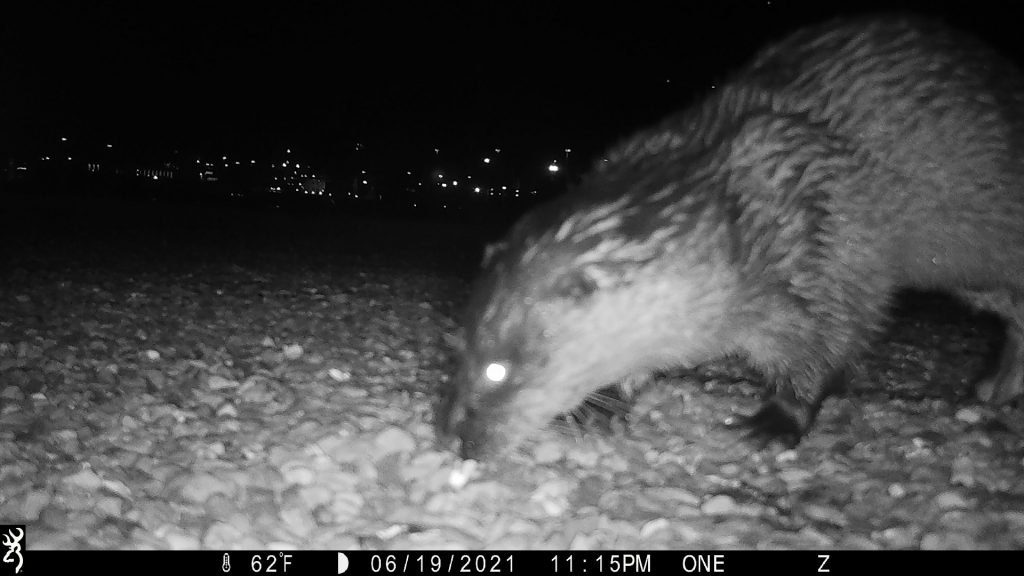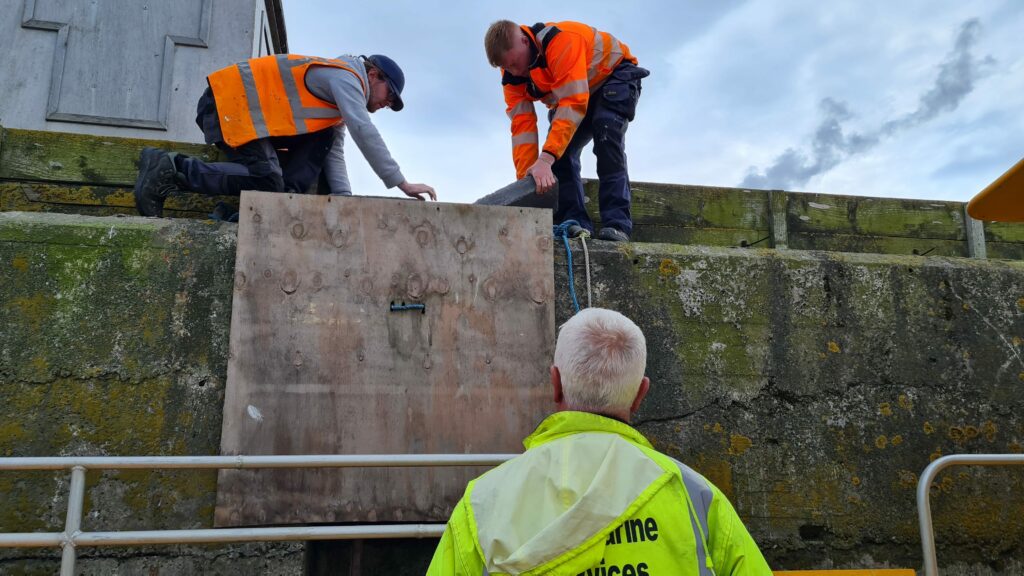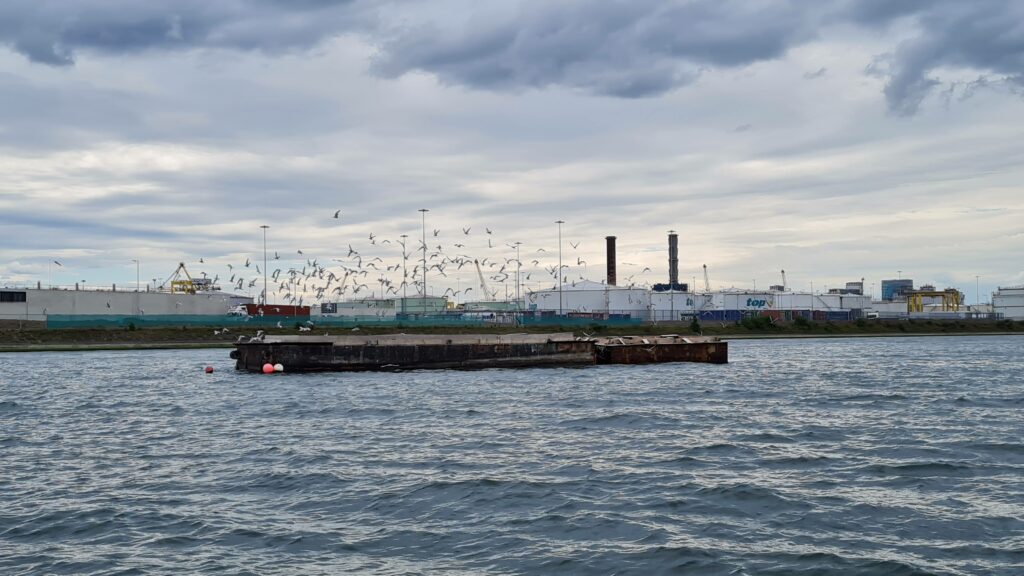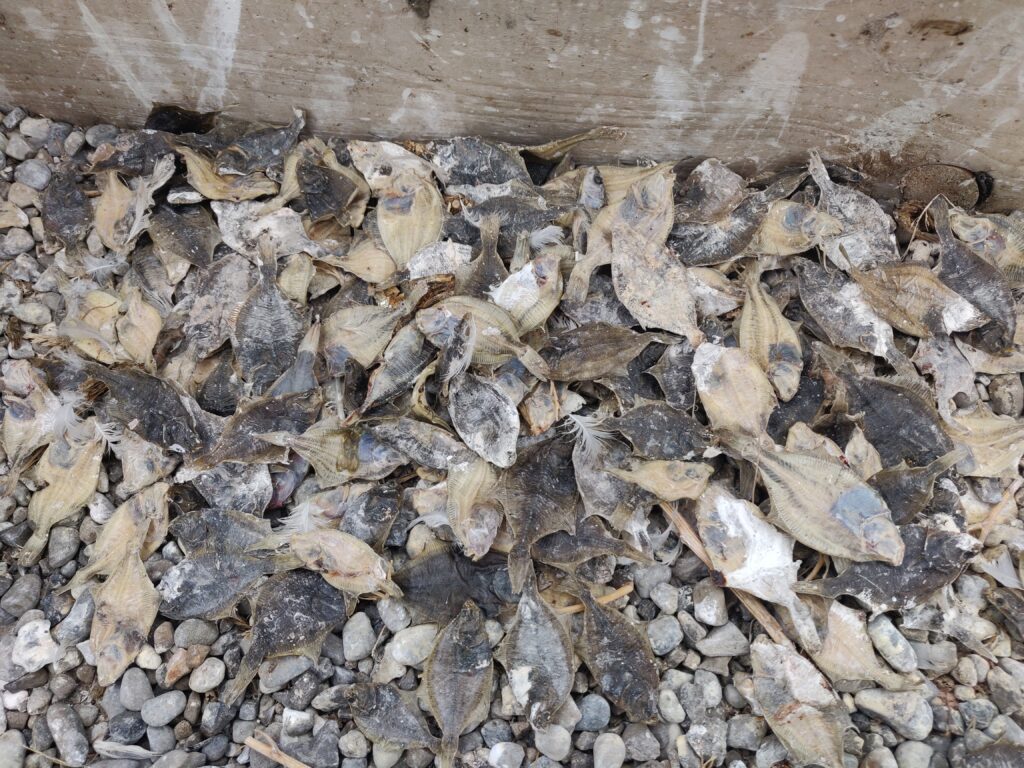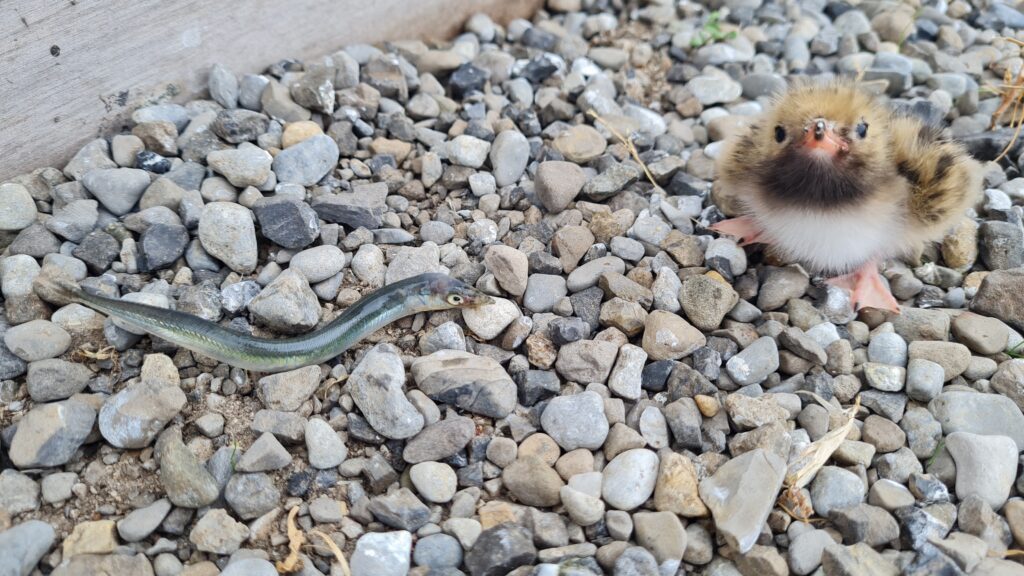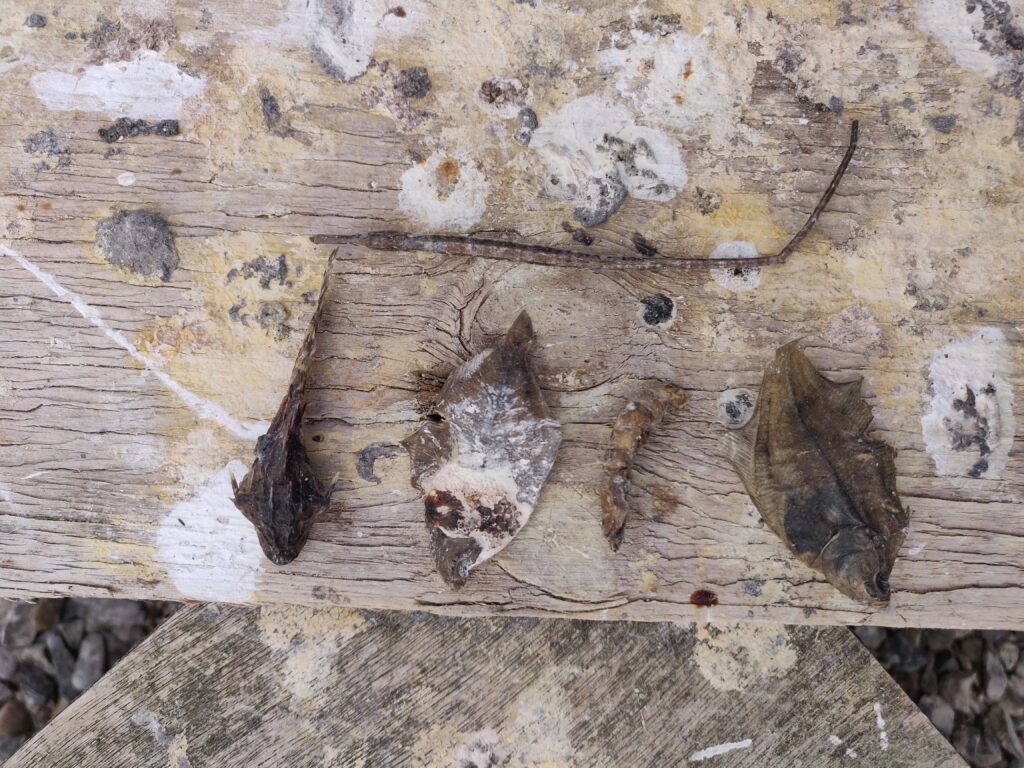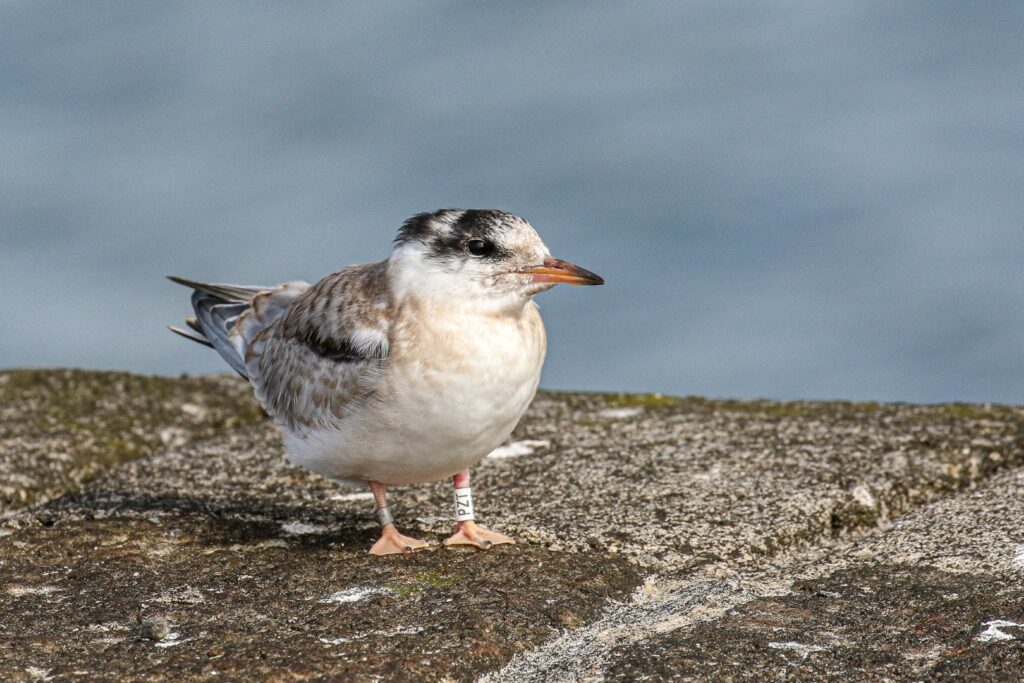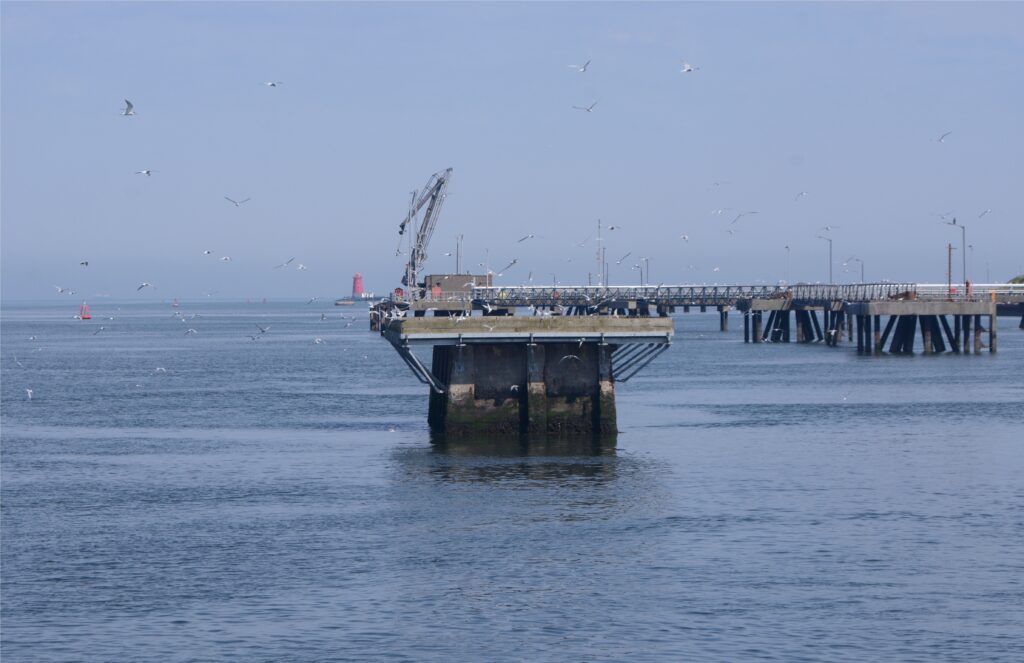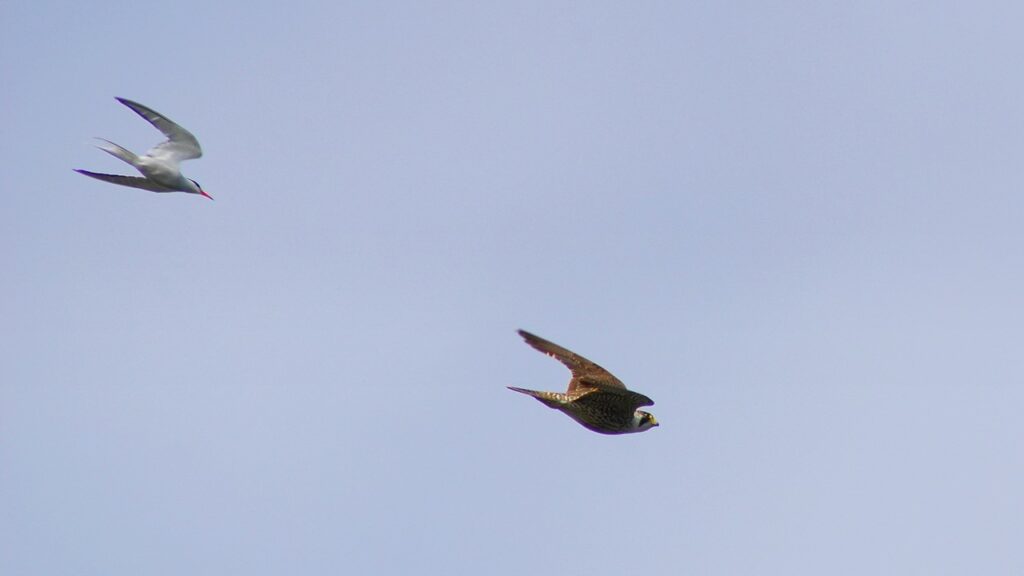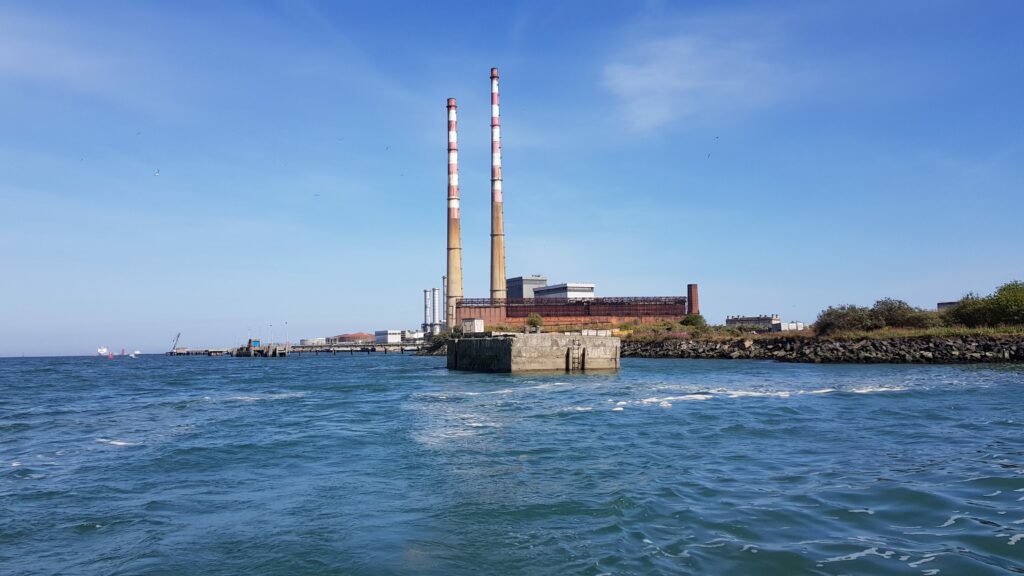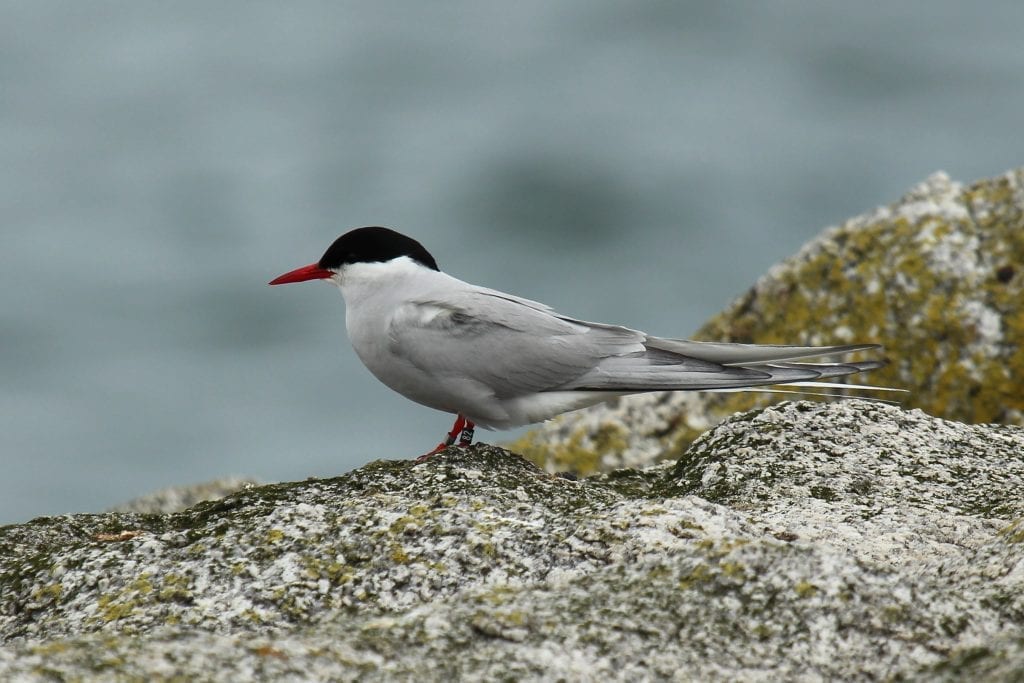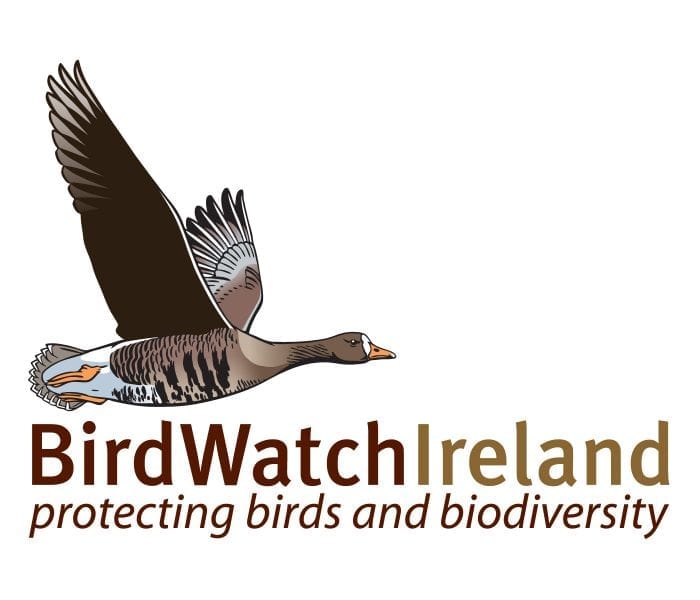Summer has long since ‘terned’ to autumn, so it’s high time we give the low down on the Dublin Port 2022 season.
The season began as normal, with the Dublin Bay Birds Project team setting sail to count all the tern nests in Dublin Port. Using this census we can figure out how many terns we have nesting each season.
 Tern nest census in Dublin Port (Victor Garland)
Tern nest census in Dublin Port (Victor Garland)
We counted over 500 Common and Arctic tern nests, with Common Terns the more, well, common of the two species.
 Common Tern (Brian Burke)
Common Tern (Brian Burke)
 Tern nest – note the shells and crab claws used presumably as decorations (Brian Burke)
Tern nest – note the shells and crab claws used presumably as decorations (Brian Burke)
These birds nest on pontoons and mooring dolphins, man-made structures, in the midst of a busy port – a fact which never ceases to blow our Dublin Bay Birds Project minds!
 Terns nesting in the Dublin Port Shipping channel (Helen Boland)
Terns nesting in the Dublin Port Shipping channel (Helen Boland)
 Common Tern chick and egg (Brian Burke)
Common Tern chick and egg (Brian Burke)
During our nest census visits, we once more made an effort to catch some of the breeding adults (under licence) and fit them with metal and colour rings.
 Ringing adult terns in Dublin Port (Helen Boland)
Ringing adult terns in Dublin Port (Helen Boland)
This year, 8 of the birds caught were already ringed and 7 of these hatched in Dublin Port. The oldest known Common Tern caught this season hatched in the port in 2006, making it 16 years old. Catching these adult birds is helping us gather information on their origins and how they are responding to changes in Dublin Port.
 Common Tern caught on the nest and originally colour ringed in 2019 as a chick in Dublin Port (Brian Burke)
Common Tern caught on the nest and originally colour ringed in 2019 as a chick in Dublin Port (Brian Burke)
The busyness of the nest census and adult ringing visits pales by comparison to the chick ringing visits. As happens every year, suddenly there were hundreds of tern chicks ready to be metal and colour ringed. Among other things, this helps us work out how many chicks survive and leave the nesting structures, and therefore how well the colony did overall.
 Common Tern fledgling taking flight (Kevin Maguire)
Common Tern fledgling taking flight (Kevin Maguire)
Throughout the 2022 season, there was a highly pathogenic elephant in the room. Avian influenza was devastating seabird colonies in the UK and continental Europe and its spectre was never far from our minds. As such, in early July BirdWatch Ireland suspended its seabird ringing activities, which was followed by a nation-wide seabird ringing ban by the National Parks and Wildlife Service. So, we swapped our ringing gear for PPE and biosecurity measures, and monitored the colony for any indications of avian flu. Thankfully the Dublin Port terns escaped the virus this breeding season.
Despite the cessation of ringing activities, we have a good idea how the colony fared.
Rats and Otters were not a problem this year thanks to the awesome defences put in place by Jimmy Murray and his crew at Liffey & Port Marine Services, and organised by Dublin Port Company.
 An Otter spotted on a trail camera in Dublin Port in 2021, predating tern nests
An Otter spotted on a trail camera in Dublin Port in 2021, predating tern nests
 Otter proofing a breeding tern platform in Dublin Port (Helen Boland)
Otter proofing a breeding tern platform in Dublin Port (Helen Boland)
Two of the platforms, the Tolka Pontoon and the Great South Wall Pontoon, look to have done quite well.
The Tolka Pontoon got a fancy extension this season. This is probably one of the reasons it had the highest number of Common Terns nesting on it since it was launched in 2013!
The terns nesting on the extension laid their eggs later in the season than those nesting on the original Tolka Pontoon. These birds were likely less experienced individuals, and/or birds which had relocated from other breeding platforms or colonies.
 Tolka Pontoon with extension on the right (Helen Boland)
Tolka Pontoon with extension on the right (Helen Boland)
Food seems to have been a temporary issue on the Great South Wall Pontoon, with high numbers of low-quality fish found discarded.
 Discarded fish (Brian Burke)
Discarded fish (Brian Burke)
Adult terns will forage for high-quality prey (fish with high calorific value) such as sandeels and sprat if they’re available.
 Common Tern chick with a Sandeel – a high quality prey species (Helen Boland)
Common Tern chick with a Sandeel – a high quality prey species (Helen Boland)
They’ll only bring back low-quality prey such as flatfish, pipefish, and shrimp to their young if their preferred prey is scarce. The tern chicks can’t grow as quickly if eating this low-quality prey and indeed in some cases may not be able to eat it at all, hence the discarded food.
 Discarded fish species. Top – Pipefish. Left to right – Scorpionfish, flatfish, crustacean and flatfish (Brian Burke)
Discarded fish species. Top – Pipefish. Left to right – Scorpionfish, flatfish, crustacean and flatfish (Brian Burke)
Despite this temporary blip however, it seems like good numbers of chicks survived and left the Great South Wall Pontoon, this season.
 Common Tern ‘PZT’ fledged from Dublin Port this season (Victor Garland)
Common Tern ‘PZT’ fledged from Dublin Port this season (Victor Garland)
Common Terns on the SPA Platform had to contend with Peregrine predation this season. Unfortunately, a lot of the nests were abandoned at the egg laying stage, and it’s thought that some of these adult birds may have re-laid on other breeding platforms in Dublin Port.
 The SPA Platform (Brian Burke)
The SPA Platform (Brian Burke)
 Common Tern chasing a Peregrine (Brian Burke)
Common Tern chasing a Peregrine (Brian Burke)
Arctic Terns nest on only one platform in Dublin Port. These birds also had to contend with avian predation at the beginning of the season, although their main nemesis was a pair of Hooded Crows nesting in an adjacent building.
 The CDL Dolphin (Helen Boland)
The CDL Dolphin (Helen Boland)
 Arctic Tern (Jan Rod)
Arctic Tern (Jan Rod)
However, like Rocky Balboa, the terns on the CDL Dolphin came back swinging and by mid-July there were ~30 chicks, including some Arctic Tern fledglings, and over 20 nests with eggs! The fledging of the Hooded Crow chicks, combined with a mid-season influx of Common Terns, (most of which were probably from the SPA Platform) helped the Arctic Terns recover.
 Tern chicks on the CDL Dolphin
Tern chicks on the CDL Dolphin
This redistribution shows just how important it is to have multiple nesting site locations in Dublin Port, so that if something goes wrong on a platform such as the SPA, there are other nesting sites in close vicinity to which these birds can safely switch. And it is through continued monitoring and collaboration that we can secure the future of the Dublin Port Tern Colony in this dynamic environment.
A massive thanks to Dublin Port Company for funding and supporting this work and to Jimmy Murray and Co. of Liffey & Port Marine Services for their expertise and enthusiasm!

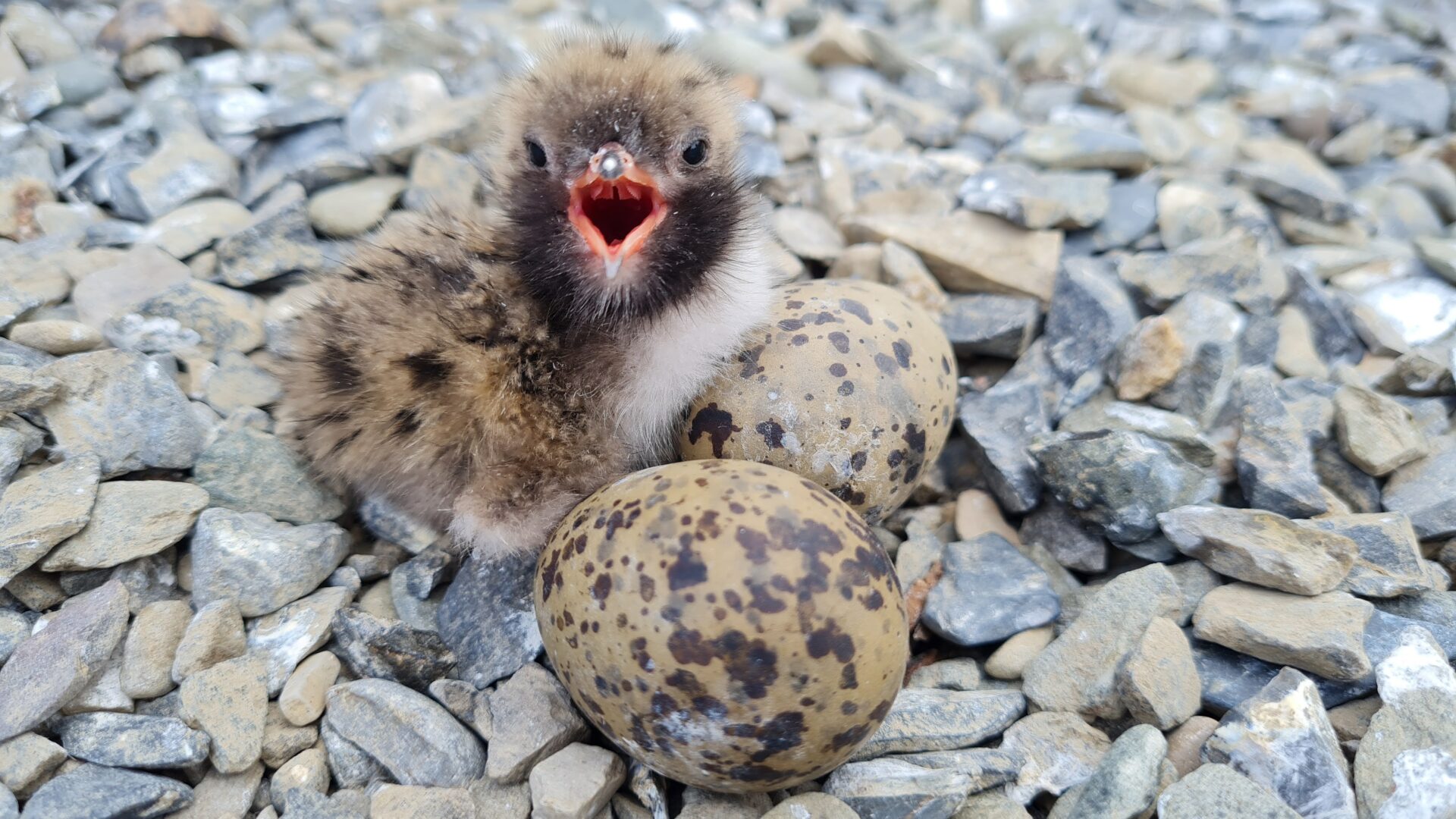
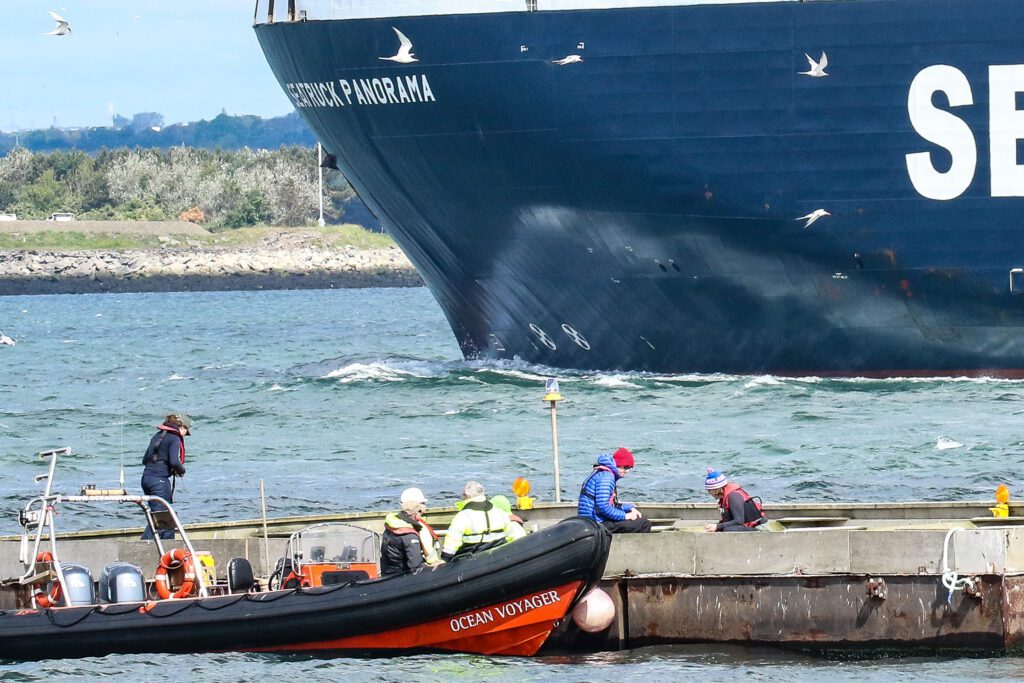
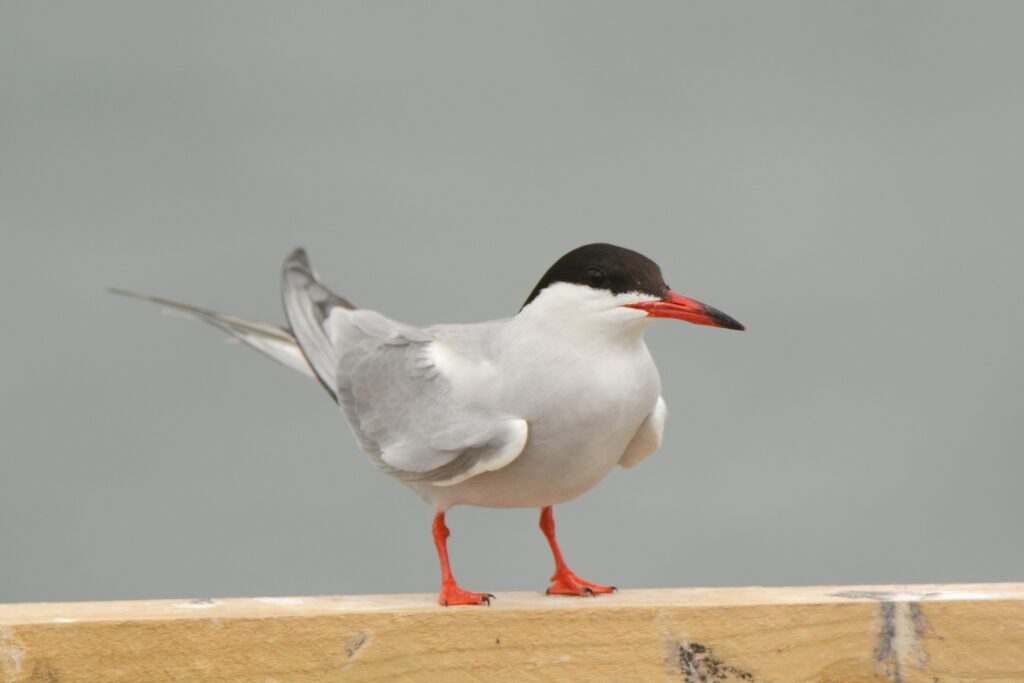
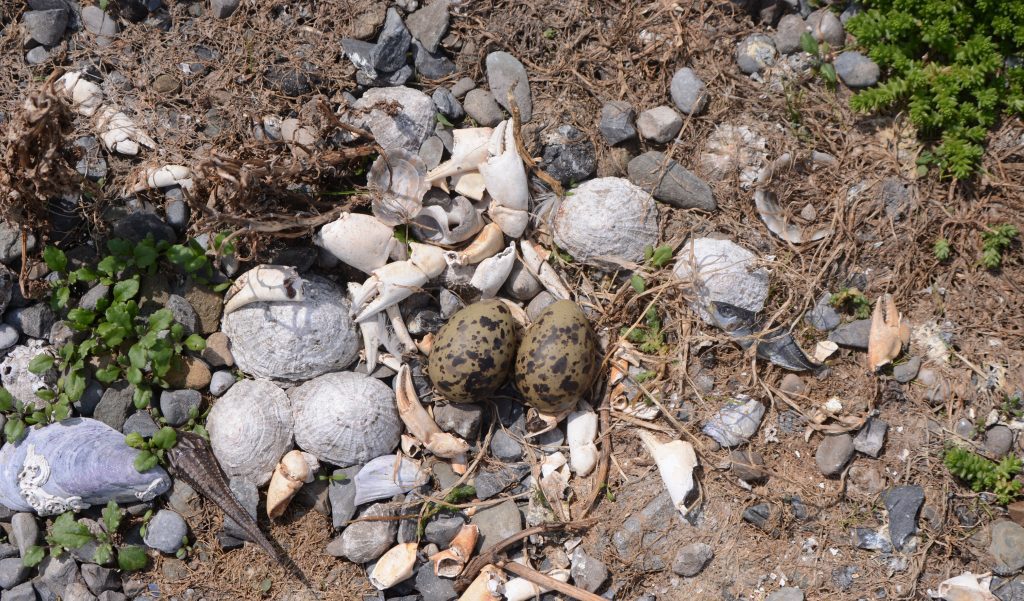
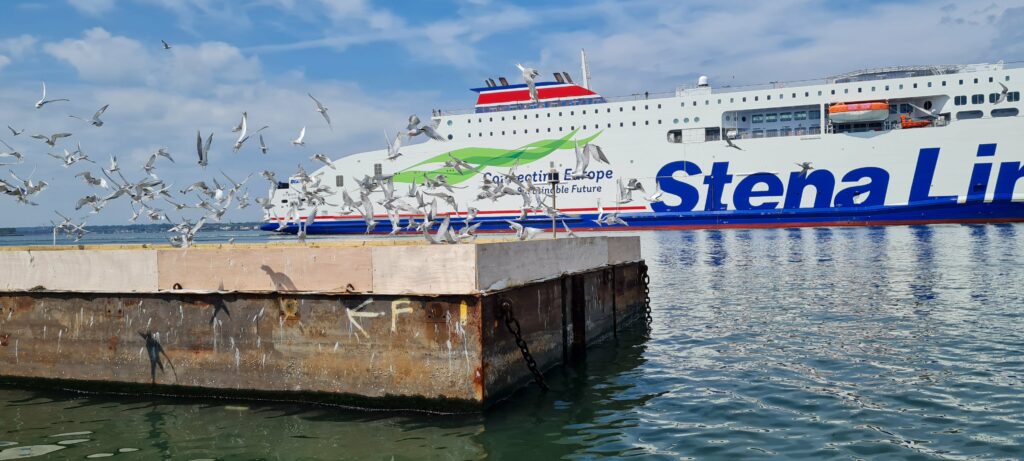 Terns nesting in the Dublin Port Shipping channel (Helen Boland)
Terns nesting in the Dublin Port Shipping channel (Helen Boland)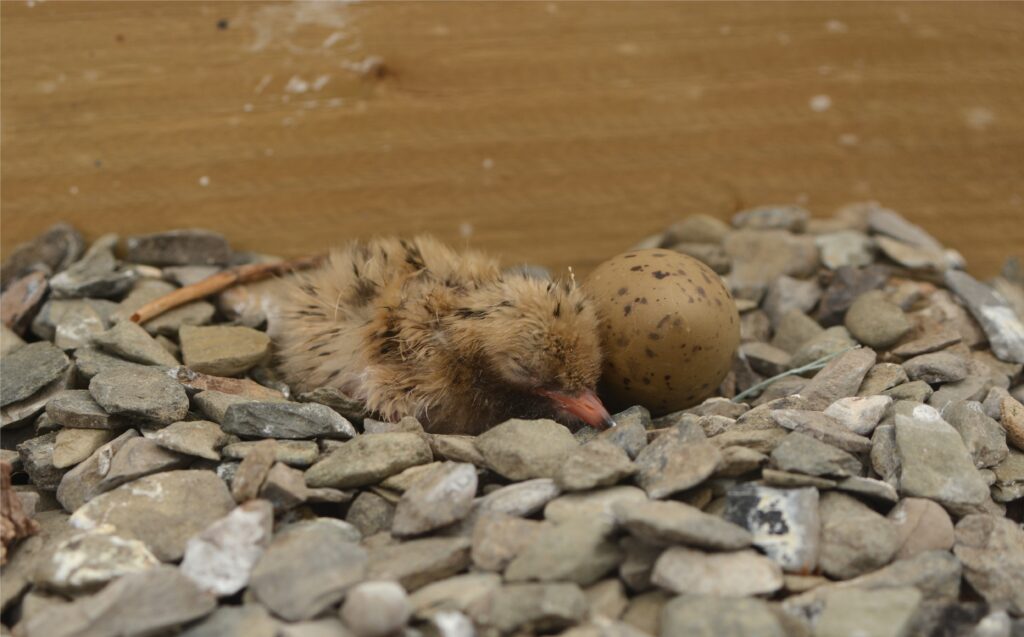 Common Tern chick and egg (Brian Burke)
Common Tern chick and egg (Brian Burke)